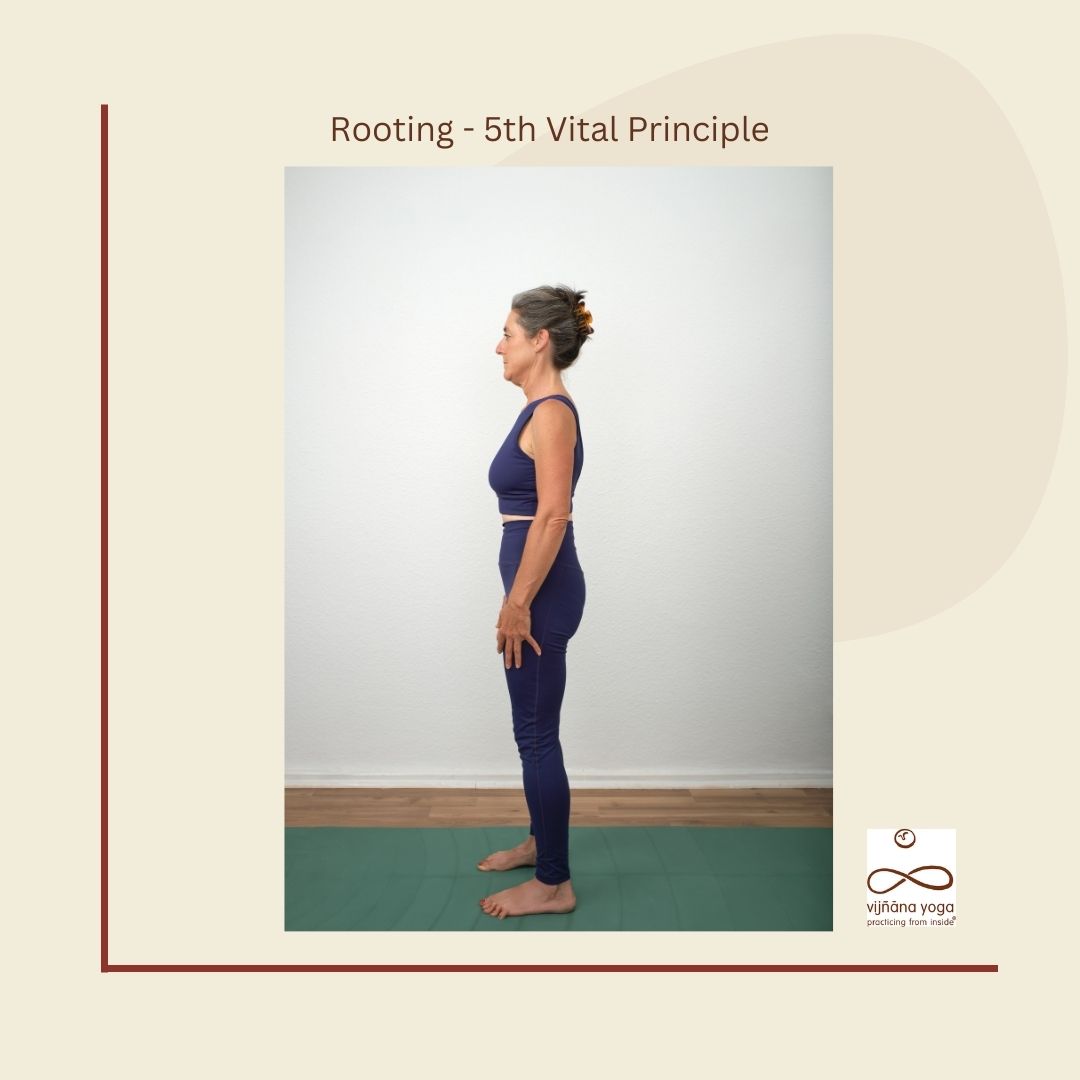Rooting is the fifth most important Vital principle of Vijñãna Yoga after relaxation, quieting the mind, intent and connecting. In yoga we need to learn how our bodies can use the bounce force provided by the ground. In order to do this we have to learn the art of rooting in whatever we do.
🙏 What is rooting in Yoga ?
In order to understand the art of rooting we need to comprehend that Gravity pulls everything to the center of the ground, but because the ground itself is compact, it resists. That resistance is a bounce, a force upward, opposite to and equal to the downward pull of gravity. When we understand the idea behind it, we can manipulate this by increasing the downward movement in certain areas in order to lighten it in others. Rooting is the act of using that part of the body, which is in direct contact with the ground.
🙏 What is rooting when it comes to your body?
When you talk about rooting you are talking in the first place about feet (pada bhanda). It is a lifting upwards, on the inhalation, of an arch that serves as a passage for the rebounding force. It is not an intense contraction, but rather an “unusual” lifting of the arch, a widening , in particular of the muscular and ligamental part of it. It is a hollowness that “sucks” the energy out of the ground.
A common mistake is to start the suction of the feet in the tips of the toes and the toes curl up. Instead the suction is only between the metatarsals (bones connecting the ankle with the toes) and the heels.
When the foot roots in this way , the “echo” takes place in the pelvic joints. The pelvis will automatically lift up from the femur heads (mula bhanda).
🙏 What is the benefit?
As rooting is mastered, the body becomes light and loose and moves without effort.
🙏 How can you practice rooting?
Many people simply push their foot or their hand into the ground when they are trying to practice rooting. But it is better to let the body become heavy and to root in a more passive way. Make sure you understand that rooting is about two directions. When you allow the weight to drop down, there is a force that comes back up, the earlier mentioned ” rebounding force”.
- Standing on your feet (Tadasana-Mountain pose):
Bend your legs to better feel the weight of your body sinking down to the ground (gravitational pull), without you engaging too much. Observe without doing. With time and practice you will feel the resistance of the ground. Your feet will start to engage as a result of the rebounding force.
I hope my take on Vijñana Yoga helps you better understand the importance of “rooting” in your own Yoga practice.I’d love to hear about your experiences in the comments.
Take care and stay safe.
Sandra 💖
Book reference:
Sen-Gupta,O. (2013) – A little book of yoga
Dona Holemann ( 2009) – Dancing the flame of life


